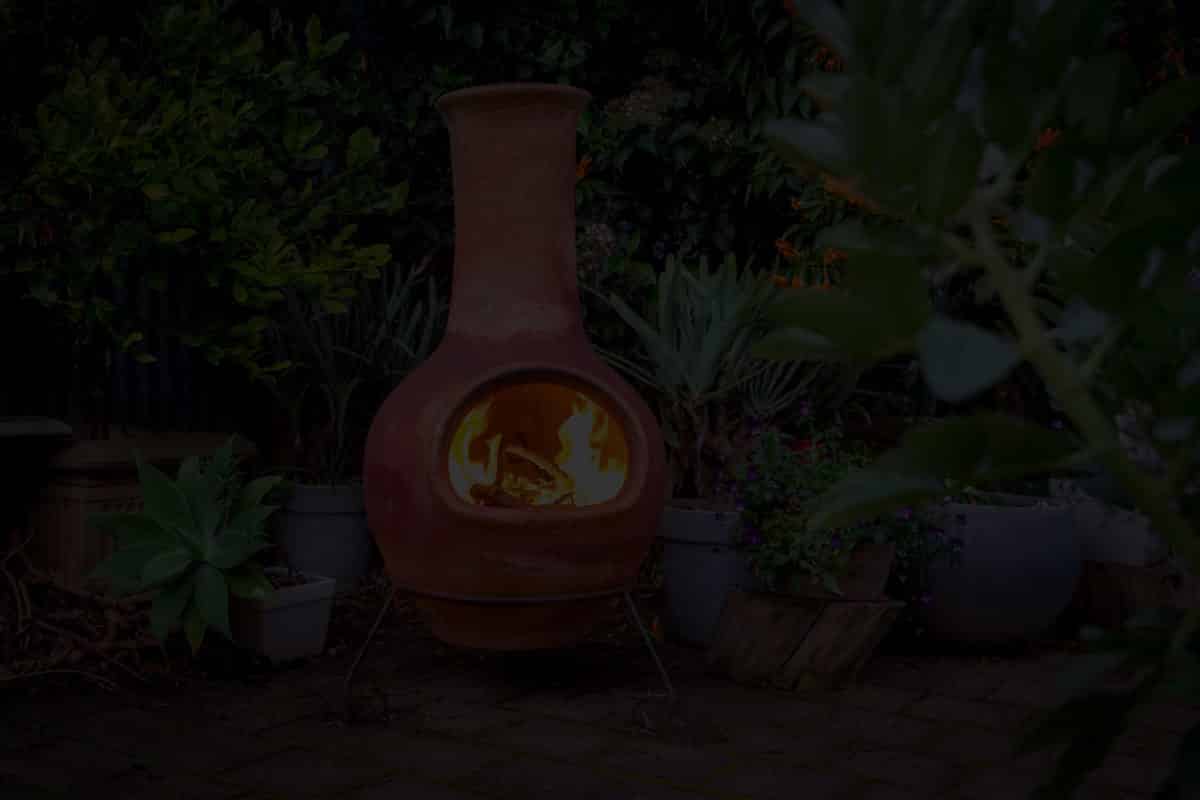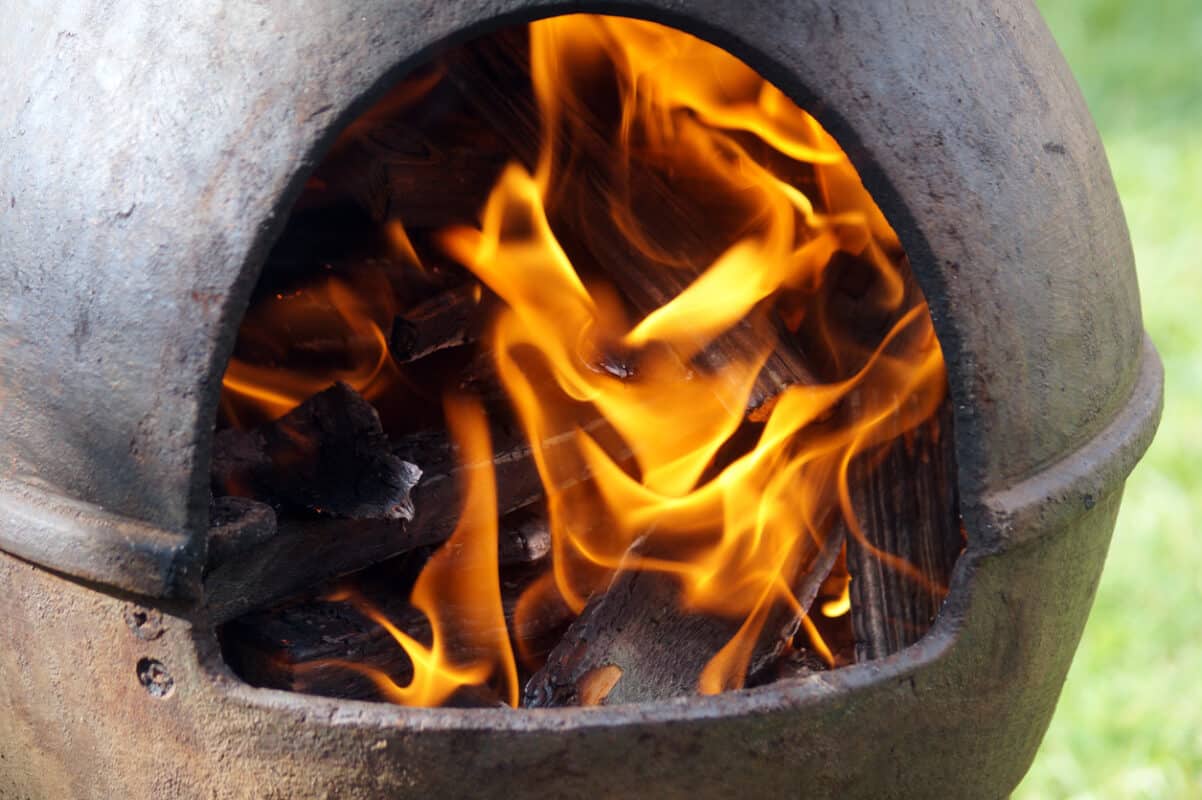How to choose a chiminea
Chimenea answers to get you on the right track
Looking for chimenea answers? You’ve arrived! We sell chimineas. Some are clay, made in Mexico by local craftspeople who’ve been doing it for years. Some are plain, some feature fabulous decoration, but they all work beautifully to warm an outdoor space, keep people cosy outside, and cook luscious BBQ food. Others are metal, designed for oodles of heat with good looks to match.
So far, so simple. But which chimenea will suit you best? What are the choices? Here are some simple answers to common questions about chimeneas, revealing which of the various types will suit your circumstances best.
Chimenea answers – What kind of chiminea will suit you best?
Chimeneas, or chimineas, come in three different materials. A fire clay chimenea is made from the same kind of red iron-rich clay used to make traditional terra cotta crockery and plant pots. A cast iron chimenea is often made from a mix of cast iron and steel, taking advantage of both metals’ properties. A steel chimenea is made of steel, which is lighter than cast iron. While they’re all designed for the same basic purpose – to warm people standing or sitting around it – the different materials mean they all perform slightly differently.
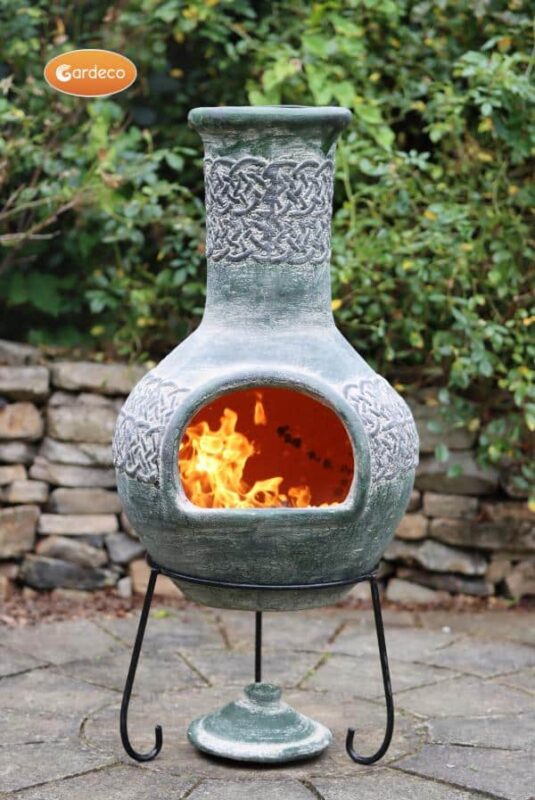
More chimenea answers – Why size matters
What size chiminea will you need? Put simply, the weight and the heat output increases with size. So size matters, as does weight.
Chimeneas come in a choice of sizes. Size affects how they perform. Small chimineas are perfect for heating the air around tiny patios and city gardens, man enough to deliver the heat you need without driving people away all sweaty and red in the face. The biggest, the magnificent XL versions at the other end of the scale, heat large areas with ease. For an enormous patio, deck, gravelled area or lawn, two or more chimineas look breathtaking. A big array keeps vanloads of people cosy around each chim as well as in the spaces between them.
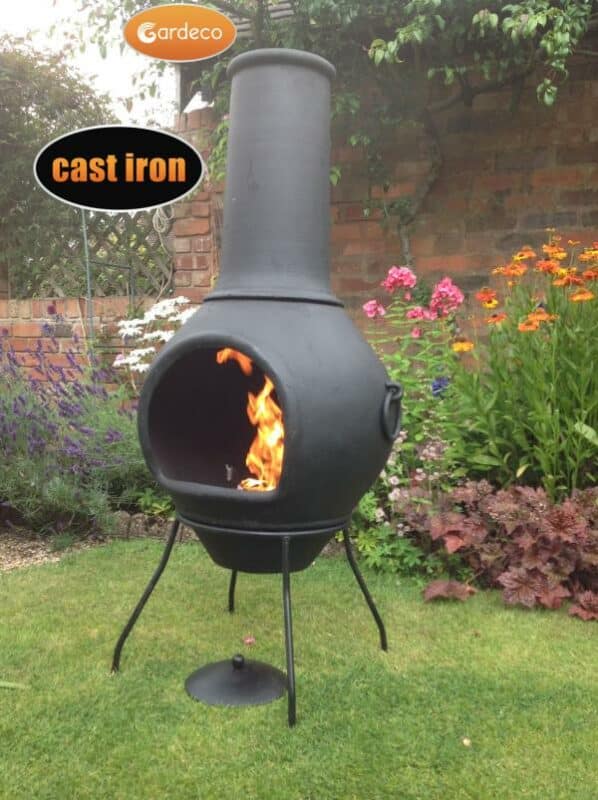
Weight is important
Weight is an indicator of quality. Cheap clay chimineas are almost always nasty. A good quality one will be heavy and solid, not thin and flimsy. Check the thickness of the body by looking down into the chimney. If the walls are less than 2cm thick it probably won’t last long. Our biggest clay chims are around 4-5cm thick, as rugged as it gets.
The best metal chimineas also tend to be good and heavy. Good quality metal means thick metal, not light, flimsy stuff. Our cast iron ones are made with great quality cast iron thick enough to withstand rust, won’t bend whatever happens. They stay looking good. They burn a large amount of fuel to generate even more heat than a comparable clay chim.
Medium sized clay and cast iron chimeneas weigh 35kg or more. The biggest can weigh in at a whopping 50kg. Steel chimeneas weigh half as much, about 15kg. The weights alone might make a difference to your decision.
Why cheap is usually nasty
Big chims cost more than small ones. It’s just a matter of logic. Our models cost more than ordinary garden centre cheapies whatever their size, and there are good reasons why. The materials are better. They’re made better, too. The source is Mexico, the place where they were invented and perfected, still used on an everyday basis.
Whatever they’re made from bigger models burn more fuel, designed to heat bigger areas. Our clay chimineas are particularly fuel-efficient whatever their size, simply because they’re Mexican. The classic wide mouth and ideal proportions mean you use less fuel to achieve a very clean, very hot flame with very little ash and minimum waste. That’s what we call performance! Our metal chims are also made to a higher standard than most. As well as better materials, they’re carefully designed for maximum performance.
Different chiminea assembly choices
Do does your chiminea need assembling? Clay chimeneas come ready to use. All you do is stick it on the stand. Put the stand somewhere safe and as flat as possible then simply lift the chimenea carefully into position. It’s almost always easier for two people than one. Then put a few inches of sand or a pack of lava stones in the belly and you’re ready to season it, then use it.
Cast iron and steel chimeneas come in pieces but the assembly is super-simple, usually a matter of attaching the legs and fixing the protective front grille on, if there is one. Maybe fitting a swing-out cooking grill. The instructions are clear and the screws and so on you ned are all included.
Chiminea safety – Which type is the safest for pets and kids
Chimeneas and fire bowls are naturally safe as long as you use them the way they’re supposed to be used. Common sense is your best friend, the same as any kind of open fire. It’s also important to keep excited dogs and children away from the chiminea, just to be on the safe side. Maybe demark a ‘no go’ area around the chiminea unless they’re sitting down or eating. It’s never a good idea to play around a chiminea or chase each other around it, whatever your age.
A chimenea guard will keep little fingers and doggy noses away from the hot surface as well as providing grown-ups with an extra layer of protection when the drinks are flowing. The surface of clay chimeneas gets less hot than a metal one, which will burn your skin if you touch it when fully heated up.
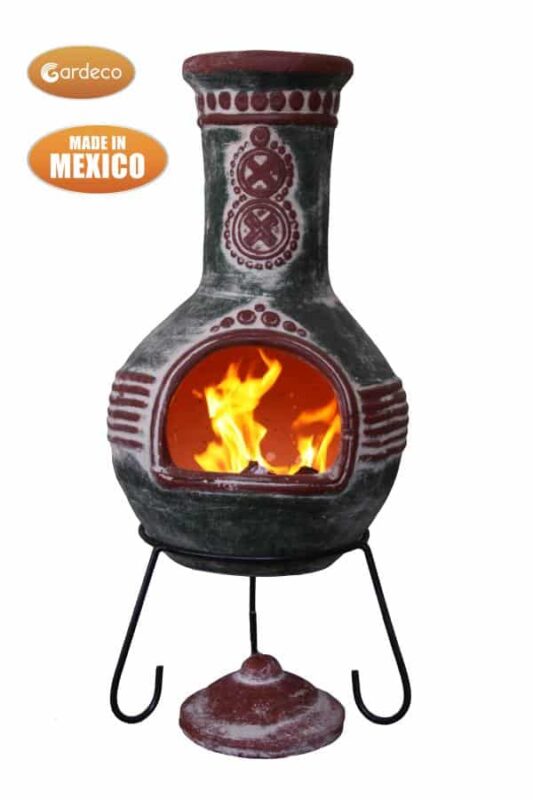
Which chiminea is the hottest?
More chimenea answers… which is hottest, clay or metal? The material the chim is made from, the size, and the amount of fuel you burn in it all make a difference to the heat output.
- There’s no need to build a big fire in a clay chiminea. A small fire heats it up perfectly and doesn’t come with a risk of cracking
- A metal chiminea takes more fuel because metal won’t crack through heat stress like a clay one can
- Metal tends to get hotter than clay
- Mexican clay models are easiest to light, stay alight, and burn fuel to fine ash with almost no ash residue
- The bigger the chiminea, the more fuel it will take, the bigger the heated area and the hotter it’ll get
Chimenea answers – Which fuel do I use in a chiminea?
Did you know wood needs air from above to burn, while charcoal needs air from below? It’s an important difference. Mexican clay chimeneas work best with wood for that reason alone. You might get away with charcoal but you should never burn coal in a chim. It burns far too hot, which could lead to thermal shock and cracks.
Cast iron and steel chimeneas burn every kind of fuel – wood, charcoal and coal. If it gets super-hot the paint will burn off to leave the metal underneath to go rusty. Some love it, others re-paint it with heat-resistant paint that works up to 600 degrees C. And that shows you just how hot these things can get!
Which chiminea needs the most looking after?
Chims are easy to care for. Remove the ash. Repaint it if you like when the surface paint wears off. You can repaint clay chimeneas with household emulsion paint, an exciting prospect when there are almost infinite colour choices, including your very own unique colours mixed by the people at DIY stores. As we’ve mentioned you can repaint a cast iron or steel chiminea with heat resisting stove paint. As a rule, because they don’t rust, clay chimeneas come with the least maintenance. On the other hand the great British weather means it’s always wise to get a proper chimenea cover to keep yours in good nick for longer.
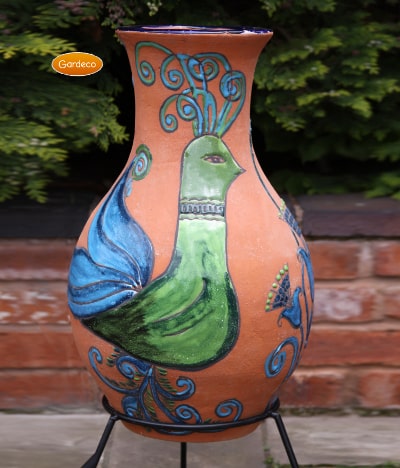
Can chimeneas stay outside all year?
Yes, there’s no need to bring yours indoors, even if you’ve got enough space. But you will need a chimenea cover.
Metal and clay chimineas both get waterlogged fast since they don’t have drainage holes, even when you keep the rain lid on. A three-layer insulated chiminea cover protects a clay chim from cracking through extreme temperature changes, with frost and damp the biggest risk. If the clay is wet or actually waterlogged and we get a freeze, your clay chim might crack, or the surface might chip off in chunks. A cover also saves the surface from dust, dirt and bird poop.
A simple but good-looking single-layer PVC chiminea cover protects a metal chim against rust-causing damp and keeps dirt off the surface. We sell both types, specially shaped to fit different sized chims
Never use a wet clay chimenea. If you light a fire in it the water will expand through heat and potentially crack the clay, in the same way as water in wet clay can freeze and expand. Wait until it’s fully dry.
If you can bring it into the garage or shed over winter, that’s the best solution of all for a longer, better-looking life. But plenty of our customers use theirs all year round, the reason why our chiminea covers are so popular.
Which type of chimenea will last longest? Overall, as a rule, metal lasts longer than clay. But if you mistreat your metal chimenea and treat your clay one like royalty, anything can happen.
Which chimenea cooks best?
And the last of our chimenea answers? Modern chimeneas are made for heating but you can also cook beautiful BBQ food on them thanks to a range of clever removable barbecue grills for clay types plus nifty BBQ grills designed for cast iron and steel versions. On the whole the manufacturer recommends a chimenea is at best used for occasional barbecuing, whereas a serious outdoor chef can’t do better than a purpose-designed barbie.
Any more questions? Let us know and we’ll provide the chimenea answers you’re looking for.
